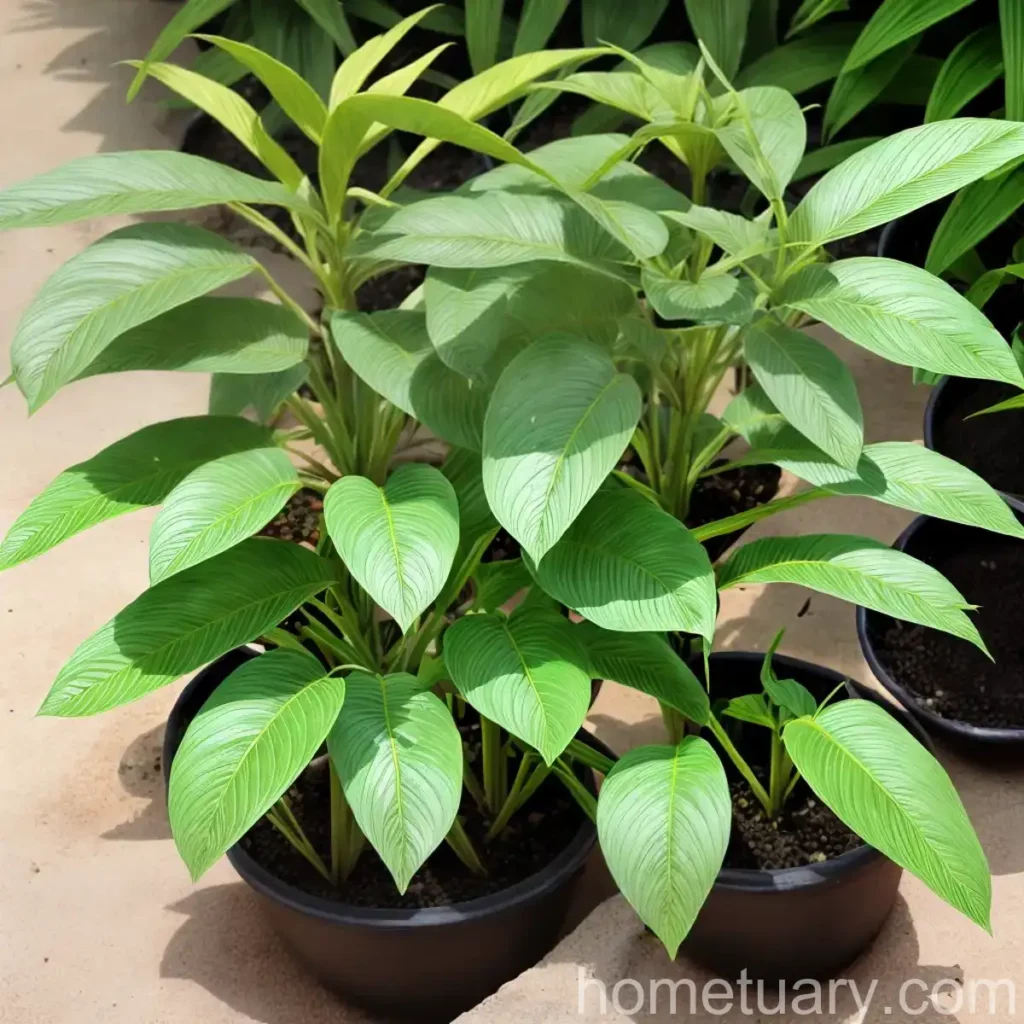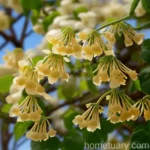Plant Scientist’s Guide to Disanthus (Disanthus cercidifolius)
As a plant scientist, it is always fascinating to explore and study different plant species. In this guide, we will delve into the world of Disanthus (Disanthus cercidifolius), a unique and intriguing plant that has captivated the attention of botanists, gardeners, and nature enthusiasts alike. From its cultural significance to its growth habits and medicinal properties, there is much to discover about this remarkable plant.
What is Disanthus (Disanthus cercidifolius)?
Disanthus (Disanthus cercidifolius) is a deciduous shrub belonging to the family Hamamelidaceae. It is native to East Asia, particularly China and Japan. This plant is characterized by its striking foliage, beautiful flowers, and impressive ornamental value. The genus name “Disanthus” is derived from the Greek words “di” and “anthos,” which translate to “two flowers,” referring to the plant’s flower structure.
Disanthus cercidifolius is commonly known as the Chinese Disanthus or Wuling Mountain Disanthus. Its natural habitat includes forests, slopes, and mountainsides, where it thrives in well-drained soil and partial shade. This plant has gained popularity in horticulture due to its attractive features and unique characteristics, making it a treasured addition to gardens and landscapes.
From its growth requirements to its seasonal interest and wildlife benefits, Disanthus (Disanthus cercidifolius) offers a compelling subject for exploration and appreciation.
Key Takeaways – Disanthus (Disanthus cercidifolius)
Before we delve into the specifics of Disanthus (Disanthus cercidifolius), let’s summarize its key takeaways:
- Disanthus (Disanthus cercidifolius) is a deciduous shrub native to East Asia, particularly China and Japan.
- It is known for its striking foliage, beautiful flowers, and ornamental value.
- This plant thrives in well-drained soil and partial shade, making it suitable for garden and landscape cultivation.
- Disanthus (Disanthus cercidifolius) offers cultural significance, wildlife benefits, and medicinal properties, adding to its overall appeal.
Now, let’s explore the various aspects of Disanthus (Disanthus cercidifolius) in greater detail, including its culture, uses, growth requirements, and maintenance.
Culture
Understanding the culture of Disanthus (Disanthus cercidifolius) is essential for its successful cultivation and maintenance. From its preferred growing conditions to its uses in landscape design, let’s delve into the cultural aspects of this fascinating plant.
Uses
Disanthus (Disanthus cercidifolius) offers diverse uses in horticulture and landscaping. Some of its common uses include:
- Ornamental Shrub: The striking foliage and beautiful flowers make Disanthus (Disanthus cercidifolius) an excellent choice for ornamental planting in gardens and landscapes.
- Shade Gardens: Due to its partial shade tolerance, Disanthus (Disanthus cercidifolius) is well-suited for shady garden areas, adding interest and foliage contrast.
- Naturalistic Landscapes: The plant’s native habitat and growth habits make it an attractive candidate for naturalistic landscapes and woodland garden designs.
Water
Proper watering is essential for the health and vitality of Disanthus (Disanthus cercidifolius). While it is important to provide adequate moisture, it is equally crucial to ensure well-drained soil to prevent waterlogging. Here are some key points to consider regarding water requirements:
- Moderate Watering: Disanthus (Disanthus cercidifolius) prefers moderate watering, especially during its active growth periods.
- Well-Drained Soil: To prevent water stagnation, ensure that the plant is grown in well-drained soil or add organic matter to improve soil structure and drainage.
Sunlight
Understanding the sunlight preferences of Disanthus (Disanthus cercidifolius) is crucial for its successful cultivation. While partial shade is ideal, the plant’s sunlight requirements vary based on environmental conditions. Here are some considerations for sunlight exposure:
- Partial Shade: Disanthus (Disanthus cercidifolius) thrives in partial shade, making it an excellent choice for gardens with dappled sunlight or light shade.
- Tolerates Some Sun: While partial shade is preferred, the plant can tolerate some direct sunlight, especially in cooler climates or during morning hours.
Fertilizer
Proper fertilization supports the growth and development of Disanthus (Disanthus cercidifolius), ensuring that it receives essential nutrients for optimal health. Here are some guidelines for fertilizing this plant:
- Balanced Fertilizer: Use a balanced, slow-release fertilizer to provide essential nutrients without causing excessive growth or nutrient imbalances.
- Spring Application: Apply fertilizer in early spring before new growth begins to support the plant’s vigor and flowering.
Soil
The soil requirements of Disanthus (Disanthus cercidifolius) play a significant role in its overall health and performance. By understanding its soil preferences, it is possible to create a favorable growing environment for this plant:
- Well-Drained, Moist Soil: Disanthus (Disanthus cercidifolius) thrives in well-drained soil that retains moisture without becoming waterlogged.
- Neutral to Acidic pH: The plant prefers soil with a slightly acidic to neutral pH range, ensuring that essential nutrients are readily available to the roots.
Pruning
Proper pruning promotes the growth, form, and flowering of Disanthus (Disanthus cercidifolius), helping to maintain its overall appearance and health. When it comes to pruning this plant, consider the following:
- Spring Pruning: Prune Disanthus (Disanthus cercidifolius) in early spring before new growth emerges to shape the plant and remove any damaged or congested branches.
- Minimal Pruning: Avoid excessive pruning, as Disanthus (Disanthus cercidifolius) generally maintains an attractive shape without requiring extensive pruning.
Propagation
Propagating Disanthus (Disanthus cercidifolius) allows for the expansion of its presence in gardens and landscapes, providing more individuals to appreciate its beauty and benefits. Here are some methods for propagating this plant:
- Softwood Cuttings: Propagate Disanthus (Disanthus cercidifolius) from softwood cuttings taken in late spring or early summer, using a rooting hormone to encourage successful rooting.
- Division: Divide mature Disanthus plants by carefully separating the root clumps, ensuring that each division has sufficient roots and foliage for successful establishment.
Container Popularity
While Disanthus (Disanthus cercidifolius) is commonly grown in the ground, it also has appeal as a container plant, offering versatility and mobility in garden design. Consider the following points regarding its container popularity:
- Potted Specimens: Grow Disanthus (Disanthus cercidifolius) in large containers to showcase its foliage and flowers on patios, decks, or in specific garden areas.
- Seasonal Displays: Utilize potted Disanthus plants to create seasonal displays, incorporating them into spring, summer, or fall containers for added visual interest.
Common Diseases
Understanding the common diseases that may affect Disanthus (Disanthus cercidifolius) is essential for proactive disease management and plant health. Here are some prevalent diseases to watch for:
- Powdery Mildew: Keep an eye out for powdery mildew, a fungal disease that can cause a powdery white coating on the foliage, particularly in humid or stagnant airflow conditions.
- Leaf Spot: Leaf spot diseases can affect Disanthus, causing dark spots or lesions on the foliage. Ensure adequate air circulation and avoid overhead watering to minimize the risk of leaf spot.
Disease Diagnosis
Prompt diagnosis of plant diseases is essential for implementing effective treatment and prevention strategies. When diagnosing diseases in Disanthus (Disanthus cercidifolius), consider the following steps:
- Visual Inspection: Thoroughly inspect the foliage, stems, and any affected plant parts for signs of discoloration, spots, powdery coatings, or abnormal growth.
- Laboratory Analysis: When in doubt, send samples to a plant pathology laboratory for professional diagnosis and identification of specific pathogens.
Common Pests
Pest infestations can impact the health and appearance of Disanthus (Disanthus cercidifolius), necessitating vigilance and proactive pest management. Here are some common pests to watch for:
- Aphids: Aphids can infest Disanthus plants, feeding on the foliage and excreting honeydew, leading to sooty mold growth and aesthetic damage.
- Spider Mites: Spider mites may target Disanthus, causing stippling and discoloration on the foliage, particularly in dry and hot conditions.
Botanist’s Tips
As a plant scientist, I offer the following tips for successful cultivation and enjoyment of Disanthus (Disanthus cercidifolius):
- Site Selection: Choose a well-drained, partially shaded site for planting Disanthus, providing the appropriate environment for its growth and development.
- Water Management: Monitor soil moisture and water Disanthus plants according to their needs, ensuring consistent moisture without waterlogging.
- Disease and Pest Monitoring: Regularly inspect Disanthus plants for signs of diseases and pests, intervening promptly to address any issues and prevent further damage.
Fun Facts
To further appreciate the intrigue and charm of Disanthus (Disanthus cercidifolius), consider the following fun facts about this captivating plant:
- Fall Foliage: The foliage of Disanthus undergoes stunning color changes in the fall, transitioning from green to vibrant shades of red, orange, and yellow.
- Wildlife Habitat: Disanthus provides habitat and food sources for beneficial insects, appealing to pollinators and supporting biodiversity in the garden.
Links to External Resources
For additional information on Disanthus (Disanthus cercidifolius), explore the following external resources:
- The American Horticultural Society – Enhance your knowledge of Disanthus (Disanthus cercidifolius) through articles, research, and expert insights on horticulture and plant care.
- Royal Horticultural Society – Access a wealth of resources and botanical information, including cultivation tips and gardening advice for Disanthus (Disanthus cercidifolius).
- Missouri Botanical Garden – Explore plant profiles, conservation efforts, and educational content related to Disanthus (Disanthus cercidifolius) and other flora.
In conclusion, Disanthus (Disanthus cercidifolius) offers a captivating blend of ornamental value, cultural significance, and ecological benefits, making it a plant of considerable interest and admiration. By understanding its growth requirements, uses, and maintenance practices, we can cultivate and appreciate Disanthus in a manner that honors its botanical splendor and natural charm.
As a plant scientist, I encourage fellow enthusiasts and gardeners to explore the unique qualities and contributions of Disanthus, embracing its role as a cherished addition to our natural and cultivated landscapes.















